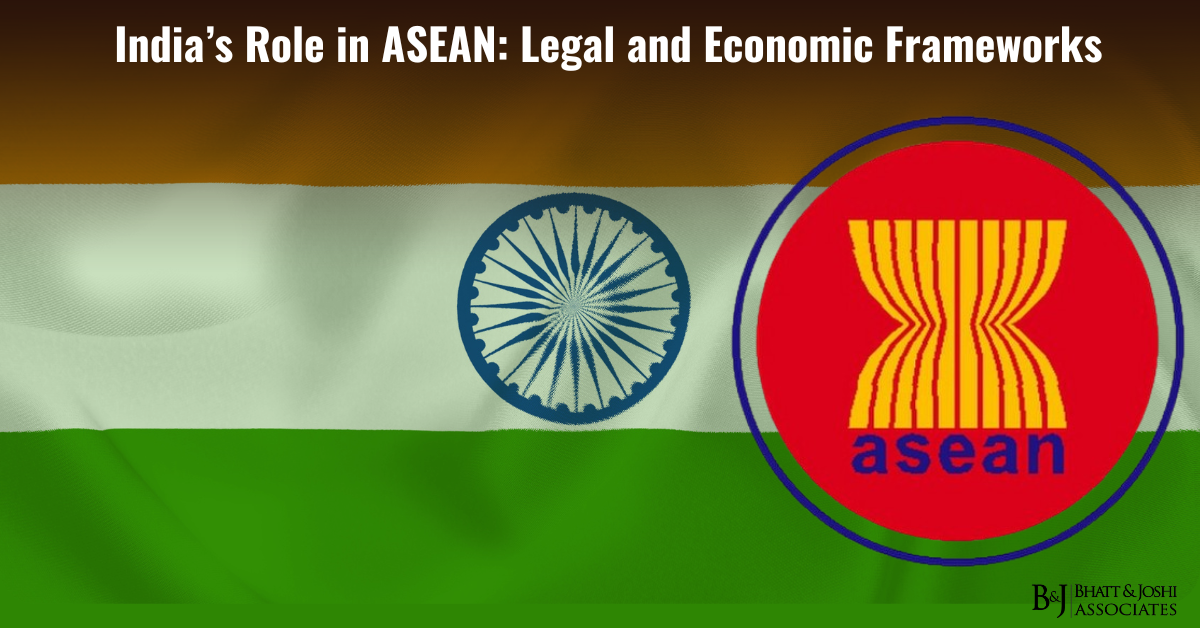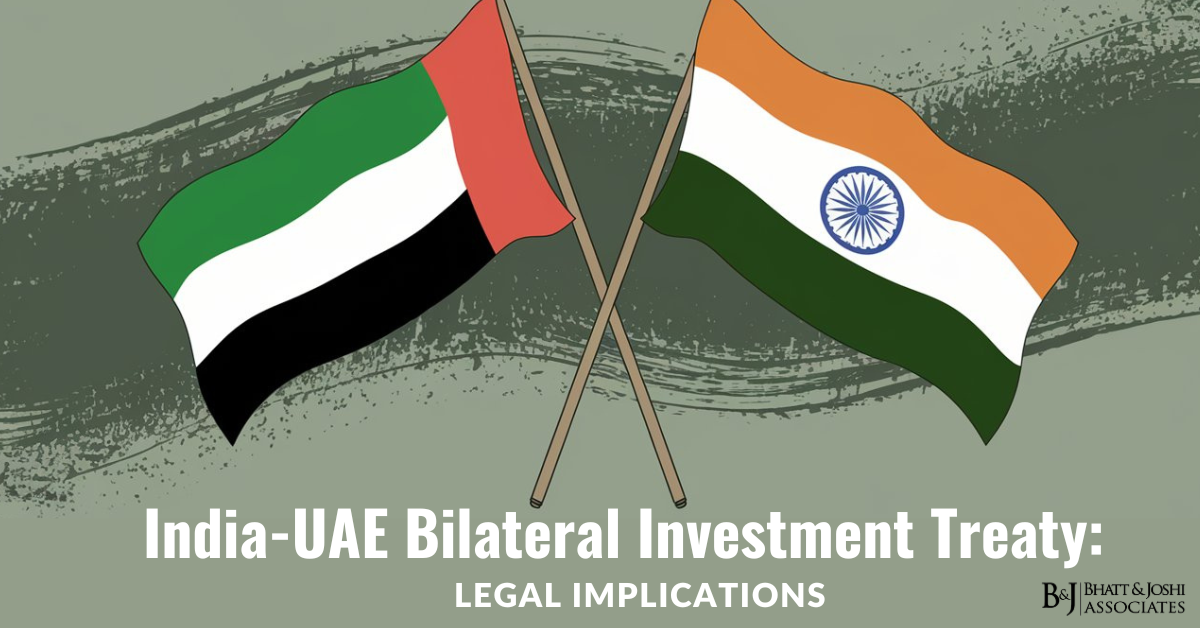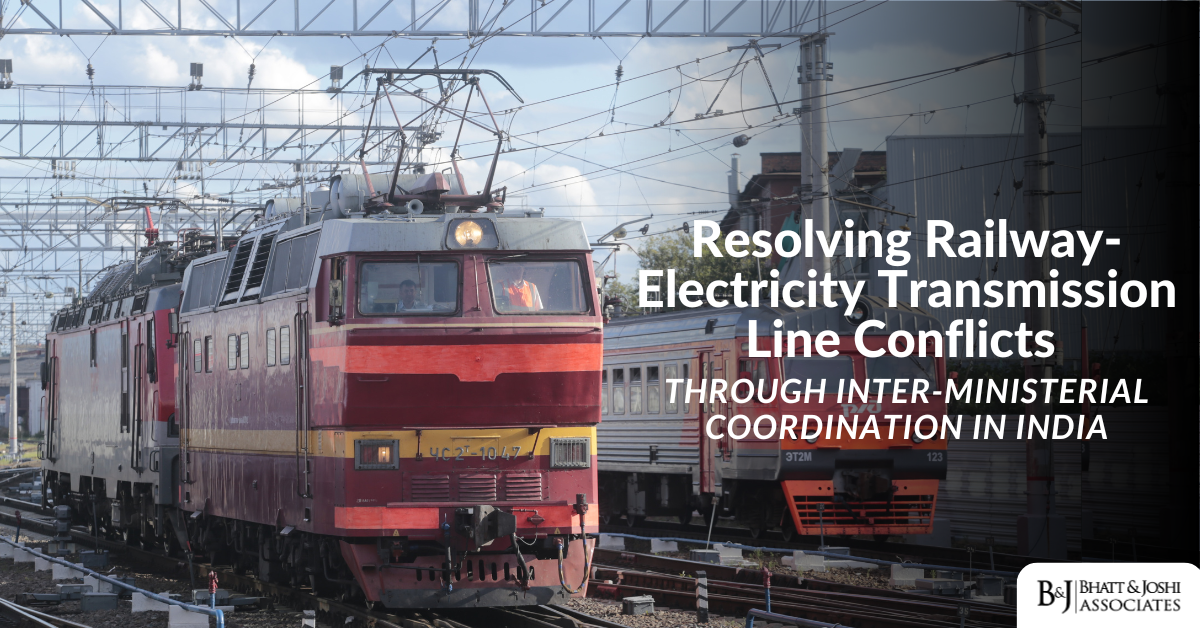Introduction
The association between Southeast Asia and India has evolved into a strong partnership, spanning trade, investment, regional connectivity, and security. Through its Look East Policy (1991), later transformed into the Act East Policy (2014), India has strategically positioned itself to strengthen ties with Southeast Asia. This article explores the legal and economic dimensions of India-ASEAN relations, focusing on regulatory frameworks, international agreements, and legal precedents shaped by case law.
Historical Context and Evolution of India-ASEAN Relations
India commenced its engagement with ASEAN in 1992 when it became a Sectoral Dialogue Partner. India was elevated to the status of Full Dialogue Partner in 1996 which was an important step towards closer relations. Further deepening of this relationship occurred with India joining the Treaty of Amity and Cooperation (TAC) in 2003. These changes were supported and motivated by bilateral economic interests, geopolitical factors, and cultural connections dating back to ancient maritime trade and common legacy.
The introduction of the Act East Policy in 2014 marked a new phase in India’s foreign policy where ASEAN and the region became primary partners in the Indo-Pacific focus. This policy revolves around deeper economic engagement, increased mobility, as well as cooperation on defence and other strategic matters. These aims are supported legally through bilateral and multilateral contracts which serve as a strong basis for India-ASEAN relations. All these historical facts have fostered the relations built on mutual trust, shared concerns, common values, and aspirations for prosperity and peace in the region.
Legal Frameworks Governing India-ASEAN Relations
The ASEAN-India Free Trade Area (AIFTA)
As the primary basis of economic collaboration, the ASEAN-India Free Trade Area (AIFTA) was formulated in 2010. In 2009, the ASEAN-India Trade in Goods Agreement was signed to abolish tariffs on more than 90% of goods traded which was later supplemented by the AIFTA. This agreement is made by the World Trade Organization (WTO) and General Agreement on Tariffs and Trade (GATT) policies.
India and the ASEAN member countries have agreed to maintain an open and rule-based trading system under the AIFTA. Provisions that are in dispute are dealt with in terms of the Dispute Settlement Understanding (DSU) of the WTO. This helps to ensure that international standards relating to law are adhered to in trade, thus ensuring consistency and equity. The AIFTA provides more efficient market access and dispute resolution which improves trade for economic development and stability in the region.
Bilateral Investment Treaties (BITs)
To foster and secure foreign investments, India has entered into Bilateral Investment Treaties (BITs) with several ASEAN nations. These treaties offer legal protection from expropriation, guarantee equal and just treatment, and offer provisions for investor-state arbitration (ISDS). For example, India’s BIT with Singapore—an ASEAN member—has led to considerable cross-border investments, especially in services and technology. Including ISDS provisions demonstrates a willingness to address investor grievances while maintaining control over domestic regulations. These treaties encompass the economic relationship’s legal framework, incentivizing foreign direct investments and nurturing business developer confidence.
The Regional Comprehensive Economic Partnership (RCEP)
Even though India withdrew from the RCEP talks in 2019, its interaction with ASEAN within this larger regional context is still important. India’s position has been influenced by its apprehensions concerning entry into the markets, non-tax obstacles, and probable consequences on its local businesses. Still, India is looking to find solutions to these concerns through other many bilateral conversations. Staying out of the RCEP does not stop India from employing other investment and trade opportunities with ASEAN, showing a realistic attitude towards maintaining the country’s needs while participating in regional collaboration.
Maritime Law and Regional Security
India’s strategic interests in ASEAN are also governed by international maritime law, particularly the United Nations Convention on the Law of the Sea (UNCLOS). As a signatory to UNCLOS, India supports freedom of navigation, peaceful resolution of disputes, and adherence to the principles of international law. This aligns with ASEAN’s own emphasis on maintaining peace and stability in the South China Sea, a region marked by competing territorial claims. India’s proactive stance in upholding UNCLOS reflects its broader commitment to a rules-based order in the Indo-Pacific.
Economic Frameworks and Collaboration
Trade and Investment
India’s trade with ASEAN economies grew greatly by 275%, amounting to roughly USD 98 billion in the year 2022-23. Founded on mutual respect and shared interests, ASEAN is the fourth largest trading partner of India, which also ranks among the top five trading partners of ASEAN. This economic partnership is strengthened through frameworks such as the AIFTA and various bilateral agreements with individual member states. The flow of goods and services in the region has further fueled Indian investment in ASEAN countries in a variety of sectors, particularly in pharmaceuticals, information technology, and engineering goods. On the other hand, ASEAN countries have also become substantial foreign direct investors in India, especially in infrastructure, renewable energy, and digital technologies. It is the combination of these legal instruments activities and their economic interactions that have strengthened relations between India and ASEAN, ensuring that they become an important axis in the region’s economic equilibrium.
Connectivity Projects
Connectivity is at the heart of India’s engagement with ASEAN. Projects like the India-Myanmar-Thailand Trilateral Highway and Kaladan Multi-Modal Transit Transport Project seek to improve physical connectivity for trade purposes. These projects are funded by bilateral and multilateral contracts which provide legal and financial responsibility. Improved connectivity lowers trade expenses and strengthens people-to-people relations, aiding socio-economic integration.
Besides physical infrastructure, importance has also been placed on digital infrastructure. Projects like ASEAN-India ICT Cooperation seek to reduce the gap between encouraging and supporting inter and intra-technological innovation and cooperation. The integration of digital frameworks into connecting projects stresses the need for legal and regulatory frameworks to provide cybersecurity and data privacy.
Judicial and Jurisprudential Dimensions
Landmark Judgments
Often India-ASEAN legal conflicts are settled by an international tribunal/court. Take, for example, White Industries Australia Limited v. The Republic of India (2011). The tribunal emphasized the role of BIT in protecting the rights of the investor in arbitration. This case did not involve ASEAN directly, but it was important in terms of investment treaties which included ASEAN member countries. These decisions show the importance of international law and arbitration in protecting investment and resolving conflicts.
Legal Aspects of Sea Conflicts
India has been increasingly stressing the role of law in solving sea conflicts, which is different from how ASEAN countries deal with the South China Sea. In any case, India’s maritime strategy would benefit from The Permanent Court of Arbitration ruling in The Philippines v. China (2016) which cancelled China’s wide-ranging claims to seas. India is not involved in this dispute but he has endorsed the rules set in this decision and supports following UNCLOS. This is a key example to study the combination of maritime law, regional geopolitics, and India in the world.
Regulatory Challenges and Opportunities
Non-Tariff Barriers
Even with the available legal structures, non-tariff barriers (NTBs) are still a notable problem when it comes to India and ASEAN trade relations. These cover setbacks about standards, certification, and customs procedures. Solving NTBs involves regulation integration and recognition deals which are under negotiation. To elevate the level of India-ASEAN economic cooperation, it is imperative to overcome these NTBs.
Sustainable Development and Climate Change
Notably, both India and the ASEAN region have considered stable development as an area of cooperation. Legislative provisions of NBA laws such as the Paris Agreement reinforce the scope for cross-national actions in renewable energy, biodiversity, and disaster management. India’s International Solar Alliance (ISA) as well as Renewable energy goals from ASEAN provides opportunities for collaborative efforts and policy development. These cases are proof of the efforts towards sustainable growth and a global declamation issue.
Looking Ahead and Strategic Considerations
The prospects for India to engage with ASEAN are likely to broaden further due to mutual interests in furthering economic development, stabilizing the region, and promoting sustainability. Strengthening legal and institutional frameworks will be essential in responding to challenges while putting the best possible arrangements in place. Building trust and responding to Indian multilateralism will enhance regional Indian cooperation and is crucial for the future of India- ASEAN relations.
Fostering Multilateralism
ASEAN’s multilateralism is India’s advocacy of the ‘ASEAN Way’ approach. Participation in events like the East Asia Summit (EAS) and the ASEAN Regional Forum (ARF) makes an active contribution to the rule of law and the fight against terrorism, cybercrime, and pandemics. These efforts and India’s activism in such forums are clear indications of his commitment towards stability in the region and the world.
Promoting People-to-People Mobility
Educational and cultural relations are part of important components of India and ASEAN relations. Activities like the ASEAN-India Youth Summit and scholarships for Indian universities are geared toward fostering goodwill and understanding between the two regions. Such activities are part of the soft power interventions of India’s Act East Policy to balance economic and strategic national interests.
Conclusion
India’s contribution towards ASEAN stems from an economic and legal structure which enables cooperation in several areas. India has become a dependable partner in the region by merging its policy with ASEAN’s goals as well as complying with international legal standards. Moving forward, there is a need for continuous work towards overcoming regulatory barriers, enhancing economic relationships, and meeting multilateralism standards. With these actions, both India and ASEAN can work towards a collaborative, stable, and inclusive Indo-Pacific region. The strong focus on shared objectives and readiness towards economic and legal integration guarantees a bright future for relations between ASEAN and India.














